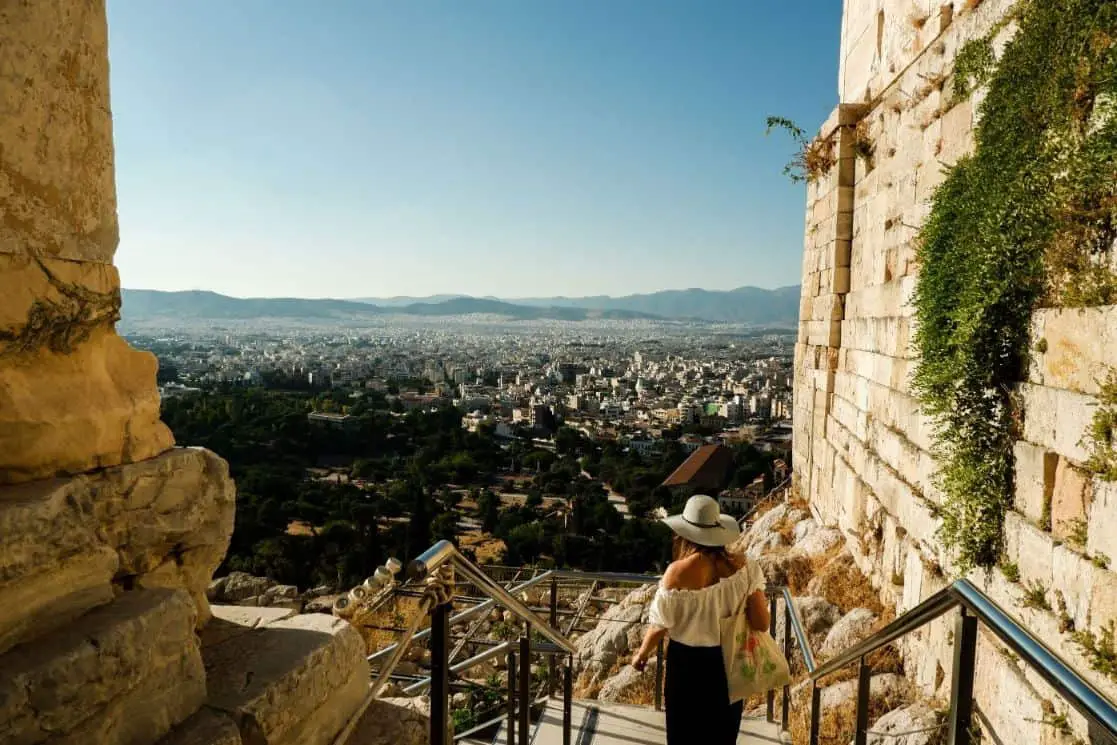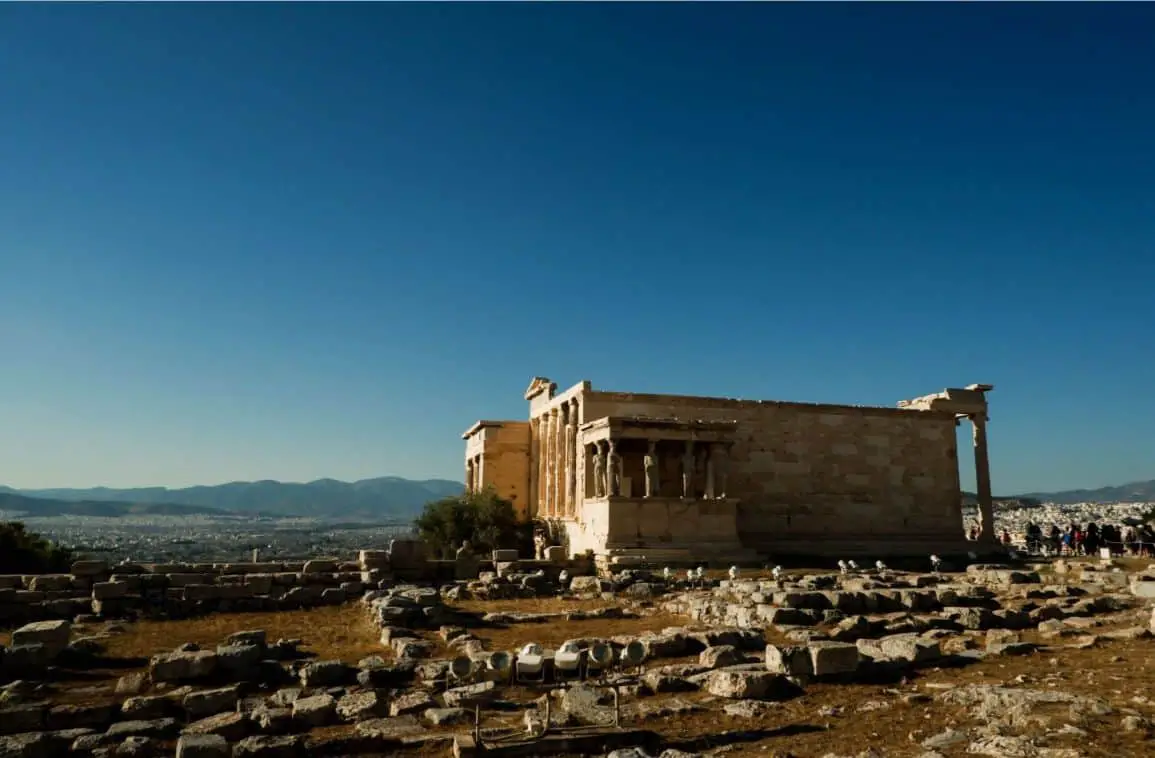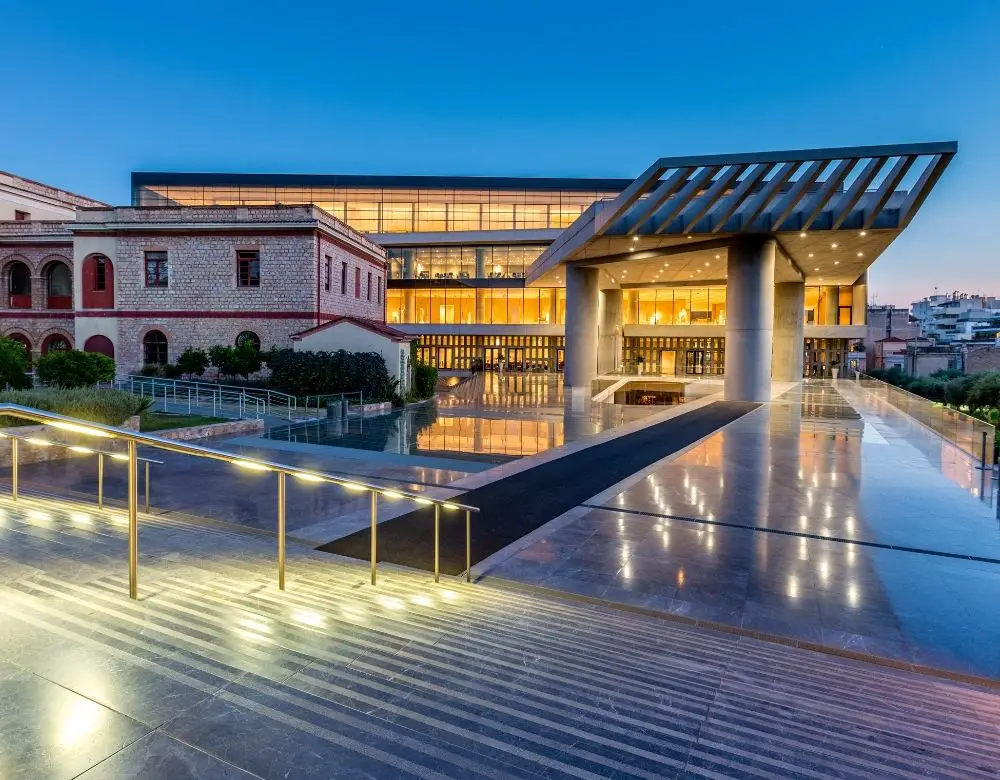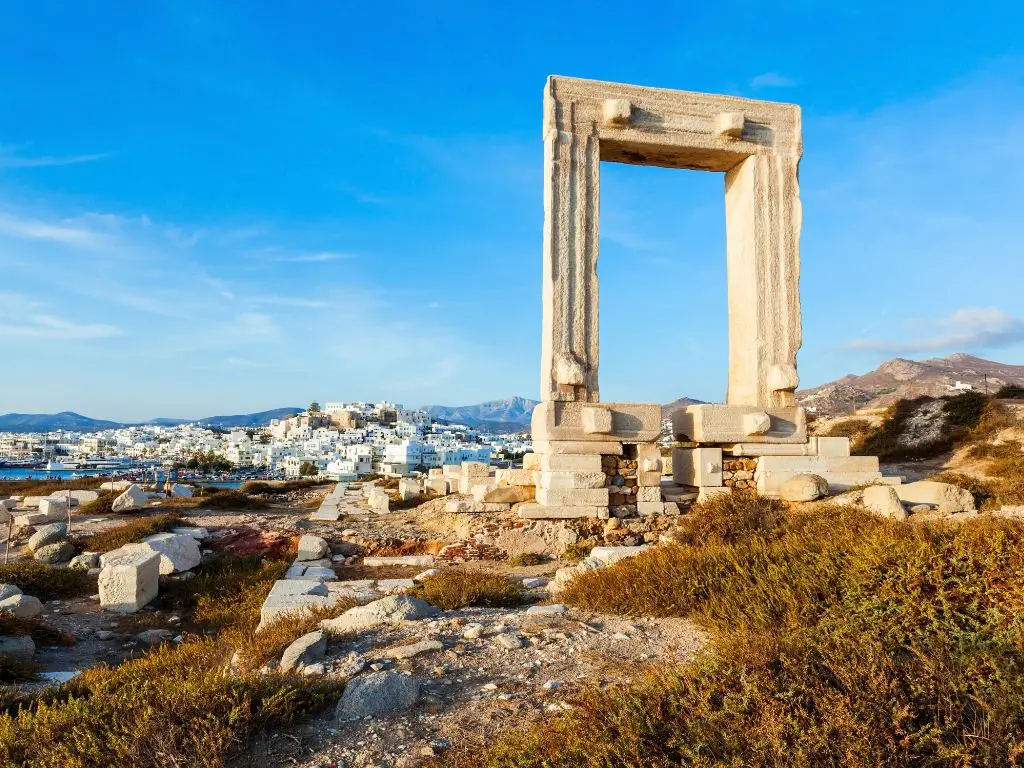



What is the best way to see the Acropolis when it is super hot and you want to have enough time to see it all?
If you’re anything like me and have a limited knowledge of Greek history, here’s a quick education for you.
The Acropolis is a defining feature of Athens and was once a fortified area of the city of ancient Greece. Constructed in 432 BC, today the Acropolis is home to the remains of many ancient ruins, most notably the Parthenon. This one you’ve probably heard of, and is a temple dedicated to the goddess Athena, from who the city got its name. Derived from the Greek word “akro” meaning high, and “polis” meaning city, it’s no surprise that you can can often spot glimpses of it high atop the hill as you wander through the maze of streets. In the evening it’s beautifully illuminated by spotlights and whether you’re strolling the night markets or at a rooftop bar, it’s hard to miss. So unsurprisingly, it didn’t take long before I was compelled to climb its slopes.




Odeon of Herodes Atticus
As you start your journey up the south slope of the Acropolis you reach the Odeon of Herodes Atticus which is a Roman style amphitheater.
It was built by the philosopher Herodes Atticus and dedicated to his late wife. If this gesture of romanticism isn’t enough, you’ll be pleased to know the venue is still used today for musical and theatrical performances. The idea of sitting in the same place of those thousands of years before, watching the plays originally written by some of the best playwrights or composers in history is enough to give you goosebumps. I will definitely be seeing a performance here as soon as I can. (Fun fact: I did it was amazing!)
☞ Tip: Latest events and information for Heroduts Atticus




The Climb
After the theatre you will make your way to the Propylaea. This is the gateway and entrance to the Acropolis, made all the more grand by the low angle at which you gaze up from the beginning of your ascent. Be sure to choose the time of day you go wisely and avoid the heat of midday as the Acropolis is very exposed. I arrived later in the afternoon as the summer temperatures were subsiding. Bring plenty of water, but a pro-tip for those of you that run out, as I did, there is a water fountain on the side of the Parthenon under the shade of the trees.
The Parthenon
After climbing the stairs to the top you can pause for a moment to catch your breath and take in what stands before you.
The Parthenon. You will be facing the west side which once supported the pediment depicting the battle between Poseidon and Athena for the city. This side is currently under restoration so don’t be disheartened if the scaffolding is an unexpected addition. The picturesque photos you see of the Parthenon are most likely from when the scaffolding was removed in 2004, for the Olympics. The other side however, is currently free from construction and was originally the official entrance to the Parthenon.
The afternoon sun gleams through the gaps in the columns and the rays catch you as you wander past. As the sun recedes further behind the hill it creates the perfect lighting for photos, which will become a treasured memory of your time in this wonderful city.




The Acropolis
The City View
Opposite the Parthenon on the east side is the belvedere and marked by the Greek flag, flying proudly in a sea of blue.
From here you have a spectacular view of the city and the perfect opportunity to orient yourself. Nothing is more satisfying than feeling like you’re beginning to master the complex weave of narrow roads and alleyways that knit the colorful fabric that is the city of Athens. You can see the Panathenaic stadium, the unfinished temple of Olympian Zeus and Lykabettus Hill.
















The Acropolis Museum
The Acropolis museum has won awards for both its architecture and conservation.
Held up by hundreds of concrete columns, the modern architecture mirrors that of ancient times. Floor to ceiling windows let the saturation of natural light bathe the statues in a golden, creamy glow. The ground floor is the ‘Gallery of the Slopes of the Acropolis’, which display the numerous remains that were found on its slopes, from statues to everyday objects. The second floor is the ‘Archaic Gallery’ which contains the sculptures that once decorated the temples. On the top floor, and the most mesmerizing of all, is the ‘Parthenon Gallery’. Here, what remains of the frieze (a sculptured border that wraps around the Parthenon above it’s columns) and pediments are mapped out in the exact dimensions of the temple. It all starts to fall into place and you have the final picture of this ancient temple.
On this level you also have fabulous view of the Acropolis and the entire south side of the Parthenon.
What is the best way to see the Acropolis in the summer and what should I do first?
So, what’s the best order to complete this duo?
I went to the Acropolis first and then the museum and it’s like doing a uniquely historic, yet enormous jigsaw puzzle. First you see what remains of the Acropolis; the temple of Athena Nike, the Erectheion and the Parthenon itself. Going into it with no idea what you’re in for, other than the glimpses you’ve been able to see from the city, adds to the awe and wonder you can’t help but feel at the foot of such an archaic masterpiece. In some places though, all that’s left is the foundation of what once was. This is where you follow up with a trip to the museum, where mini replicas or life size reconstructions of what the Acropolis once looked like can help you mentally rebuild the remains you’ve seen at the site itself and piece together its former glory.
No matter which order you choose to do them in, one is incomplete without the other. While what is left of the Parthenon and the surrounding citadel is extraordinary, it is both sad and humbling to learn of all that is has endured. Because of its history of warfare, thievery and in more recent times, deterioration due to pollution, one must merely picture where the old temple of Athena once stood and to imagine the gold plated statue of Athena towering 13 meters high before them, in what is now an empty void. But, together with the Acropolis museum, and its careful and artistic preservation of remains, an undeniably unique experience is created that beautifully nurtures the history of such an ancient treasure.
👇 Are you travelling to Athens?
The city has so much to see and do it is at times hard to know where to start. COCOMAT.bikes is a company and an experience, founded to offer bike lovers and future bike lovers the best way to explore the city. All of their wooden eco-friendly bikes are hand-made with love and care and are a unique experience you shouldn’t miss! Use our promo code when booking and get a bio drink at their central Athens location.










